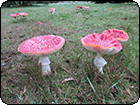Ask mecha: histories of creative hubs? I'm looking for some histories on places like Paris that were/are breeding grounds for creative thinkers and artists.
→[More:]
I don't even know how to phrase it. Wikipedia gives me "Cultural Creatives" which isn't really what I'm after. I'm looking for the ecosystem structure description that makes it happen. If that makes any sense. I've done
Florida's book. I want something more historical/society/components of what makes the chemical stew favorable to creatives. I'm not sure it's possible to create the framework to make it happen; I think it happens organically because it wants to. One key thing from Florida: creatives want to be anonymous when they want to be.
Where do I start?
signed, chewfreakitude because I know you people will understand. :)
 photo by splunge
photo by splunge
 photo by TheophileEscargot
photo by TheophileEscargot
 photo by Kronos_to_Earth
photo by Kronos_to_Earth
 photo by ethylene
photo by ethylene